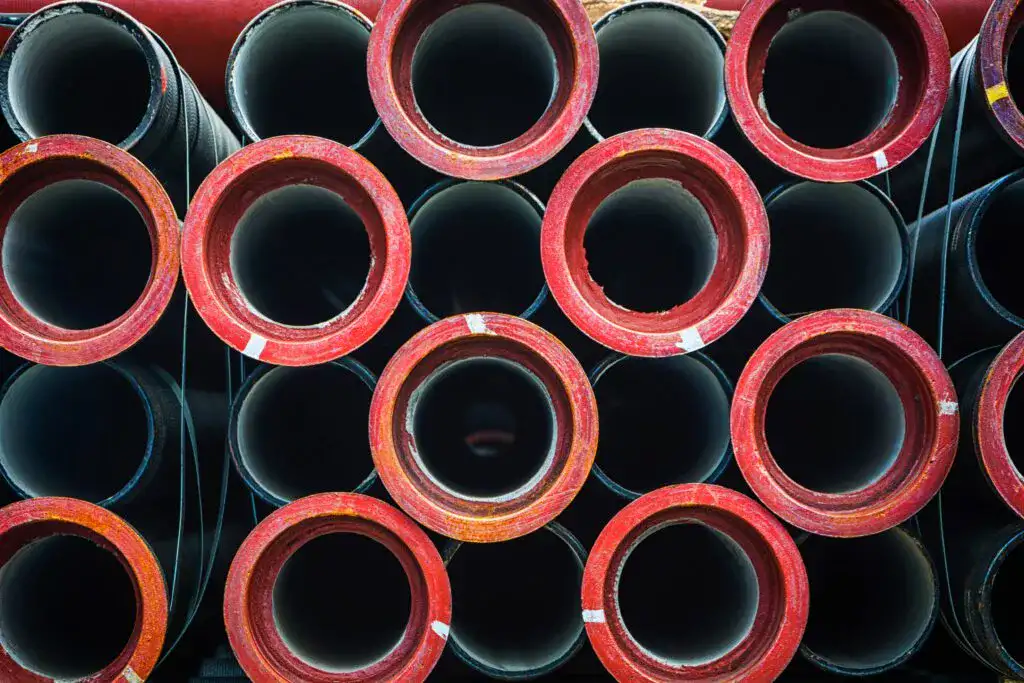While ductile iron pipe is predominantly joined using push-on, mechanical, or flanged connections, it can be threaded—but only in specific contexts such as flanges, fittings, and tapped bell ends rather than plain-end pipe. The American Water Works Association (AWWA) codifies threaded flanges for ductile iron pipe under ANSI/AWWA C115, and common pipe‐thread standards (e.g., ASME B1.20.1 NPT) apply to companion flanges and fittings. Threading plain-end pipe is not standard practice because it reduces wall thickness and can compromise pressure rating; instead, manufacturers provide threaded flanges, threaded mechanical joint bells, and threaded fittings (elbows, tees, nipples) to facilitate NPT connections when needed. For most underground water-main installations, push-on or mechanical joints (AWWA C111) are preferred due to ease of assembly and deflection capability, with threaded options reserved for service taps, wall pipes, and above-ground connections.

1. Joint Methods for Ductile Iron Pipe
1.1 Push-On (Slip-Type) Joints
The push-on joint is the simplest bell-and-spigot connection, relying on a rubber gasket compressed by the spigot to form a seal without threading. It allows up to 5° deflection per joint and is widely used for buried mains.
1.2 Mechanical (Gland-Type) Joints
Mechanical joints use a gland and bolts to compress a gasket in the bell, offering restraint options and easy installation; these joints are not inherently threaded, but the bell or companion flange may be tapped for studs with NPT threads for mounting or restraint.
1.3 Flanged Joints
Flanged ductile iron pipe ends are either cast or welded-on, then drilled and tapped per AWWA C110 and ASME B16.42; companion flanges conform to ASME B1.20.1 (NPT) for threaded connections above ground.
2. Threaded Connections in Detail
| Threaded Component | Standard | Application |
|---|---|---|
| Companion Flange | AWWA C115, ASME B1.20.1 | Above-ground or wall-pipe connections; tapped for NPT studs. |
| Threaded Fittings (Elbows, Tees, Nipples) | ASTM A536, ASME B16.3 | NPT threaded cast & ductile-iron fittings for service lines. |
| Mechanical Joint Bell (Tapped) | AWWA C111 | Bell end tapped to accept threaded studs or connectors. |
-
Companion Flanges: 150 lb and 300 lb ductile-iron flanges are available with NPT threads per ASME B1.20.1, conforming to AWWA C115.
-
Threaded Fittings: Cast & ductile iron elbows, tees, and cross fittings offered in NPT sizes up to 6″, meeting ASTM A536 and ASME B16.3.
-
Tapped Bells: “Wall pipe” assemblies often use mechanical joint bells tapped (threaded) for studs or service connections, enabling through-wall piping without threading the pipe barrel.
3. Advantages & Limitations of Threading
3.1 Advantages
-
Flexibility: Allows direct connection to threaded valves, adapters, and meters without additional flanges.
-
Service Taps: Simplifies installation of service lines on distribution mains using threaded service saddles.
3.2 Limitations
-
Wall Loss: Threading plain-end pipe reduces wall thickness and may lower pressure class; manufacturers avoid threading spigot ends for this reason.
-
Stress Concentration: Thread roots can act as crack initiators under cyclic loads, making threaded spigots less suitable for buried mains.
4. Alternatives to Threaded Pipe Ends
| Connection Type | Pros | Cons |
|---|---|---|
| Push-On Joint | Quick assembly, joint deflection, no special tools | Limited above-ground use, needs thrust blocks |
| Mechanical Joint | Restrained options, easy maintenance | Bulky gland assembly, not as flexible in tight spaces |
| Flanged Joint | Rigid, dismantlable, handles tension and bending | Heavier, more expensive, requires bolting |
For most water-main installations, push-on and mechanical joints per AWWA C111 are preferred; threaded connections are relegated to above-ground, service, or special equipment applications.
5. FAQ
Q1: Can ductile iron pipe be threaded like steel pipe?
Not in the same way—plain-end spigots are not threaded due to wall loss and stress concerns; instead, manufacturers provide threaded flanges, fittings, and tapped bells for NPT connections.
Q2: Which standard covers threaded ductile-iron flanges?
ANSI/AWWA C115 covers flanged ductile-iron pipe with ductile- or gray-iron threaded flanges, with threads per ASME B1.20.1.
Q3: Are NPT fittings available for ductile iron?
Yes—threaded cast & ductile-iron fittings (elbows, tees, nipples) conform to ASTM A536 and ASME B16.3, with NPT threads per ASME B1.20.1.
Q4: How do tapped mechanical joint bells work?
Mechanical joint bells can be tapped for studs or connectors, providing a threaded interface without cutting into the pipe barrel, commonly used in wall-pipe assemblies.
Q5: What should I use for buried mains?
Use push-on (AWWA C111) or mechanical joints (AWWA C111) for buried mains; threaded options are not recommended underground due to deflection and stress considerations.
References:
- AWWA C111: Rubber-Gasket Joints for Ductile Iron Pressure Pipe and Fittings – American Water Works Association
- ANSI/AWWA C115: Flanged Ductile-Iron Pipe with Threaded Flanges – American Water Works Association
- ASME B1.20.1: Pipe Threads, General Purpose (Inch) – The American Society of Mechanical Engineers
- ASTM A536: Standard Specification for Ductile Iron Castings – ASTM International
- ASME B16.3: Malleable Iron Threaded Fittings – The American Society of Mechanical Engineers

